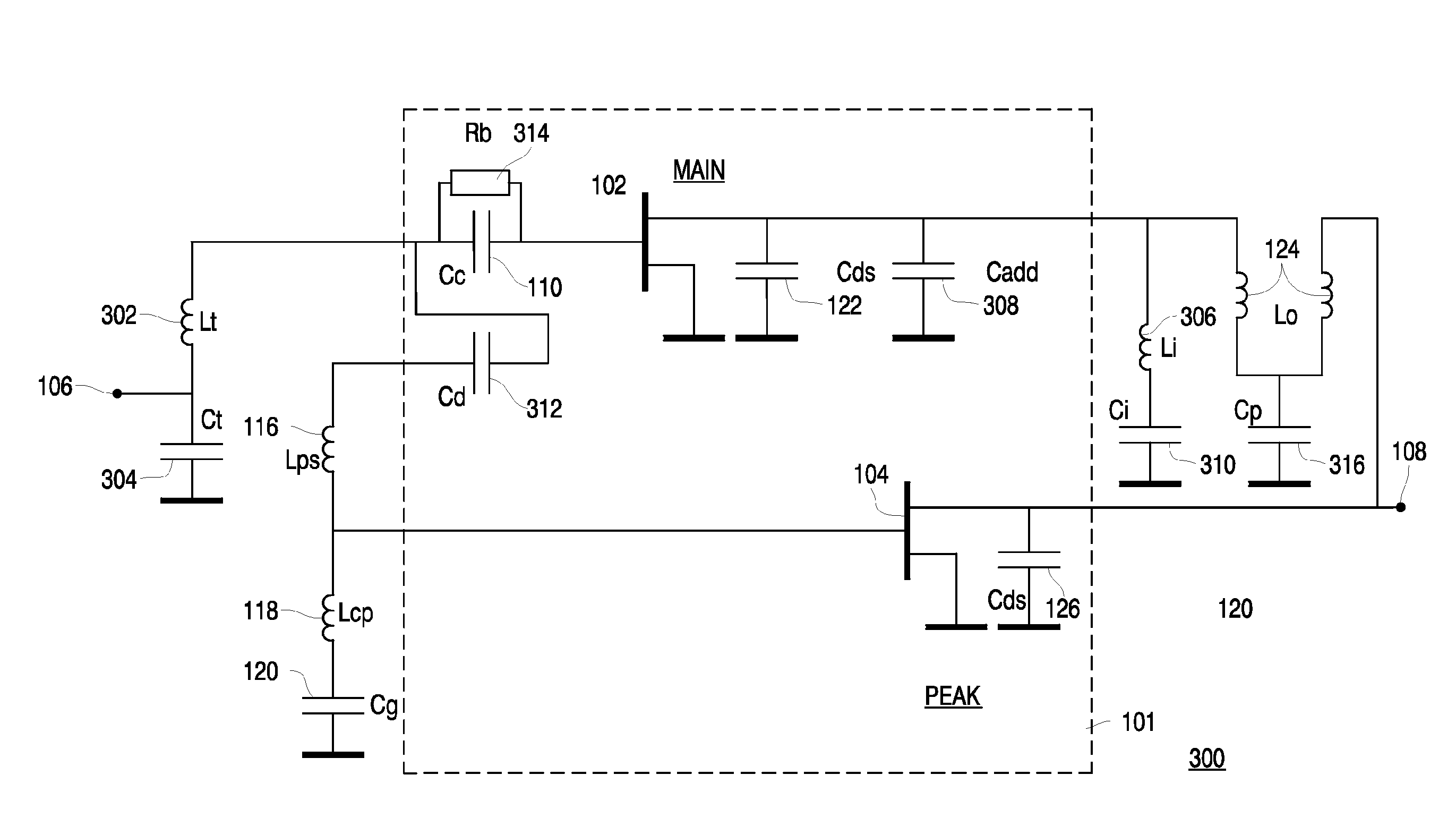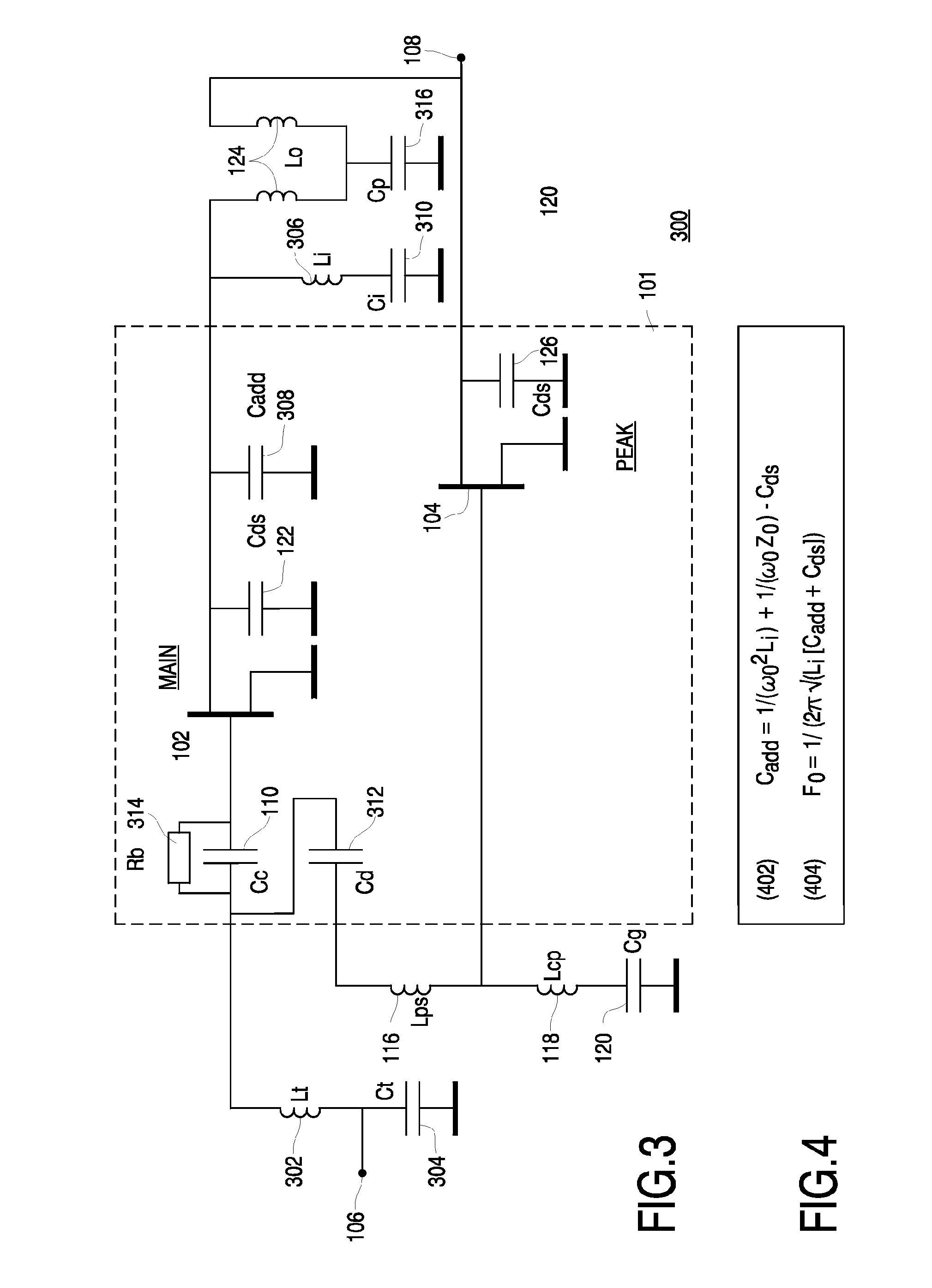Integrated doherty amplifier
- Summary
- Abstract
- Description
- Claims
- Application Information
AI Technical Summary
Benefits of technology
Problems solved by technology
Method used
Image
Examples
Embodiment Construction
[0027]When modifying the design of cell 100 for operation in these other frequency ranges, the following should be taken into consideration. A first consideration relates to the fact that the highly-doped silicon substrate used in LDMOS does not allow creating integrated high-quality inductances. Typically, the best quality factor (Q-factor) of around 6 is attainable at a frequency of 2 GHz. At all other frequencies, above or below, the quality factor is lower. Such inductances in the input network introduce direct losses that directly affect the gain of an integrated Doherty amplifier. In the output network, such integrated inductances will also affect the gain, as well as power capability and efficiency.
[0028]A second consideration relates to the belief that an integrated Doherty amplifier device is going to be commercially successful only if the device outline is similar to that of traditional class-AB devices. That is, the integrated Doherty device is preferably to have a simila...
PUM
 Login to View More
Login to View More Abstract
Description
Claims
Application Information
 Login to View More
Login to View More - R&D
- Intellectual Property
- Life Sciences
- Materials
- Tech Scout
- Unparalleled Data Quality
- Higher Quality Content
- 60% Fewer Hallucinations
Browse by: Latest US Patents, China's latest patents, Technical Efficacy Thesaurus, Application Domain, Technology Topic, Popular Technical Reports.
© 2025 PatSnap. All rights reserved.Legal|Privacy policy|Modern Slavery Act Transparency Statement|Sitemap|About US| Contact US: help@patsnap.com



